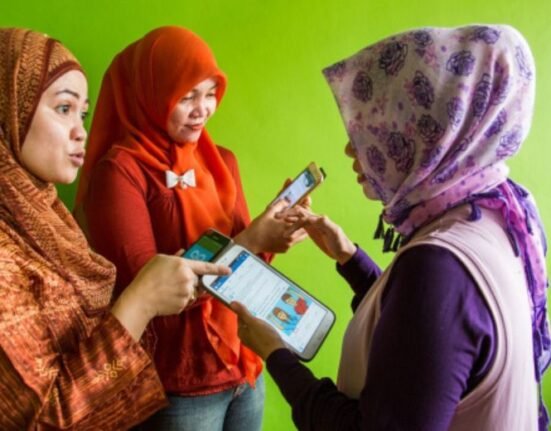Drugs
Health
Opinion
How a zamorin, a British judge, helped build world’s first ayurvedic hospital
- by HealthQuill
- April 28, 2025
- 0 Comments
- 3 minutes read
- 621 Views
- 6 months ago

HQ Team
April 27, 2024: A zamorin, an ailing British judge, and a group of physicians played crucial roles in establishing the world’s first Ayurvedic hospital in 1902.
The Keraleeya Ayurveda Samajam, a charitable trust located on the southern banks of the river Nila in Shoranur, Kerala, is now nearing its 125th anniversary.
“Our core values have not changed,” said S. Subramanian Moosath, president of the Samajam. “We operate on a no-profit, no-loss basis, and the Samajam still stands for the genuine, traditional approach of using herbs to cure diseases. We strictly follow the traditions laid down by past masters, rejuvenating both body and soul.”
Ayurveda, India’s ancient medical science, is over 5,000 years old. The Sanskrit words Ayu and Veda translate to ‘life science.’ References to the medicinal use of herbs are found in the world’s oldest written literature, the Rigveda.
Ayurveda is a science based on universal principles, exploring the connection between mind and body and the laws of nature that govern life.
British skepticism
The Zamorin of Calicut, Manavikrama Ettan Raja, is credited as the visionary behind the creation of the Keraleeya Ayurveda Samajam. At the time, British colonial authorities were sceptical of Indian traditional medicine, according to a Samajam statement.
The Zamorin insisted on assembling a panel of eminent physicians and renowned Ashtavaidyas (traditional physicians), known as the ‘Chikitsayogam.’
This panel was led by the legendary Triprangod Parameswaran Mooss.
The British government’s attitude toward Ayurveda shifted when Sir Basil Scott, the Chief Justice of the High Court, became bedridden with a chronic illness and was successfully treated by Mooss, the Samajam’s chief physician. Impressed by his recovery, the governor honoured Mooss with the first ‘Vaidyaratnam’ title, meaning ‘jewel of physicians’ in Sanskrit.
River Nila and the first hospital
In 1902, the first Congress of the Samajam was convened at Chalapuram in Kozhikode, initially named Arya Vaidya Samajam. In 1913, it was renamed Keraleeya Ayurveda Samajam and registered under the Charitable Society Act of 1860.
The world’s first public Ayurvedic hospital was established at Cheruthuruthy, on the southern banks of the river Nila, on the land donated by the Prince of Cochin and fundraising efforts led by the Zamorin and his followers. The hospital was inaugurated on February 5, 1914, in the presence of the Madras Governor, Sir Arthur Lawley.
The term ‘Kerala’ was adopted by the Samajam over four decades before the state of Kerala was officially formed in 1956. In 1940, the Samajam moved to the northern banks of the river Nila in Shoranur.
Over the years, it attracted poets like Vallathol Narayana Menon, musicians such as Chembai Vaidyanatha Bhagavatar, politicians including Kamaraj Nadar and C. Subrahmaniam, and industrialists.
Yoga and modern practice
The Keraleeya Ayurveda Samajam now spans seven acres, with nearby airports at Kochi and Calicut. The campus features a variety of medicinal plants, including a nakshatravana grove representing 27 stars.
“There is no herb in this world without medicinal properties,” said Moosath. Patients can also experience and practice yoga under expert guidance.
The Samajam continues to manufacture its medicines on campus, adhering to traditional methods. “Special treatment packages, always person-specific and advised after consultation, are designed for the effective management of lifestyle-related disorders such as hyperlipidaemia, fatty liver, and obesity,” said Dr. Moosath.
More than 400 products are manufactured with traditional purity, including both classical Ayurvedic medicines and unique formulations based on ancient manuscripts and the expertise of Samajam physicians.
Specialized therapies
The Samajam introduced specialised therapies such as dhara (head bath), pizhichil (body bath), thalapothichil (helmet therapy), njavarakkizhi, and njavaralepam (special rice massage) at its nursing homes.
It has successfully treated conditions like cervical and lumbar spondylitis, spondylolisthesis, sciatic neuritis, rheumatoid arthritis, osteoarthritis, gout, calcaneal spur, psoriasis, eczema, varicose veins, DVT, chronic sinusitis, migraine, post-stroke symptoms, facial palsy, insomnia, and stress-related disorders.
Medicines are prepared in bronze vessels over tamarind firewood to ensure even heating. The pharmacy is now GMP-certified and adheres to strict quality controls.
The Samajam operates as a complete health sanatorium, accommodating up to 60 patients at a time. Its board of directors, consisting of eleven elected members, manages the institution, which is largely funded by philanthropy.
Plans are underway to expand the number of cottages and nursing homes.




